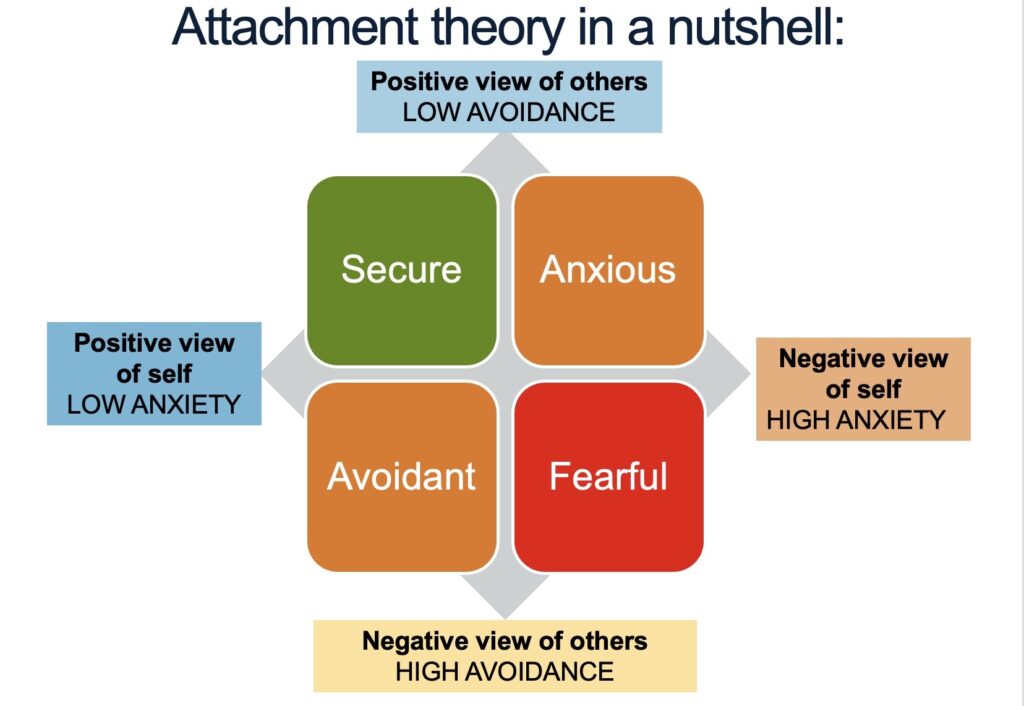
Attachment Theory helps to explain grief. Grief is what happens when we humans experience loss. That is, when we lose something or someone, we need to go through a period of adjustment. That adjustment takes time, and it’s called “grief”.
Why do some people sail through that period of adjustment, and others have a hard time? Many, many factors impact the process of grief, including how important that thing or person was, and whether the loss was sudden versus expected. The death of a child is particularly hard to face, as well as the death of a loved one who took their own life.
Another key factor is how attached the grieving person was to the thing or person lost. Attachment theory answers these questions: “Who is the person who is grieving? What is their previous history with attachment and loss?” If you read much in the psychology literature these days, you will bump up on attachment theory.
Here’s my illustration, distilling attachment theory to its barest of bare bones:

Everyone has an attachment style (though it may not fit neatly into one of these four tidy boxes): Secure, Anxious, Avoidant, or Fearful. How the attachment style was formed goes back to childhood and how relationships and losses were handled back then. Now, as adults, people generally have either a positive or negative view of others, and either a positive or negative view of self.
A Secure attachment style has, generally, a positive view of both others and self. A Fearful attachment style has negative views of both. Anxious has positive view of others but negative view of self, and Avoidant has negative view of others but positive of self.
Perplexed yet? Sorry about that. But the point is that who you are, walking into a time of loss, will affect how you handle that loss. Do you generally view others with suspicion but feel good about yourself? You might have a harder time of handling a loss than someone who generally sees both others and themselves in a positive light.
The process of grief can bewilder people who are grieving. No two people grieve a loss – even if it is the same loss – in identical ways. Grief takes work. It is hard work to detach from the old (wanted) reality and attach to the new (unwanted) reality. When grieving people know their attachment styles they can better understand themselves and their responses. The difficult path through grief thus becomes less confusing.
